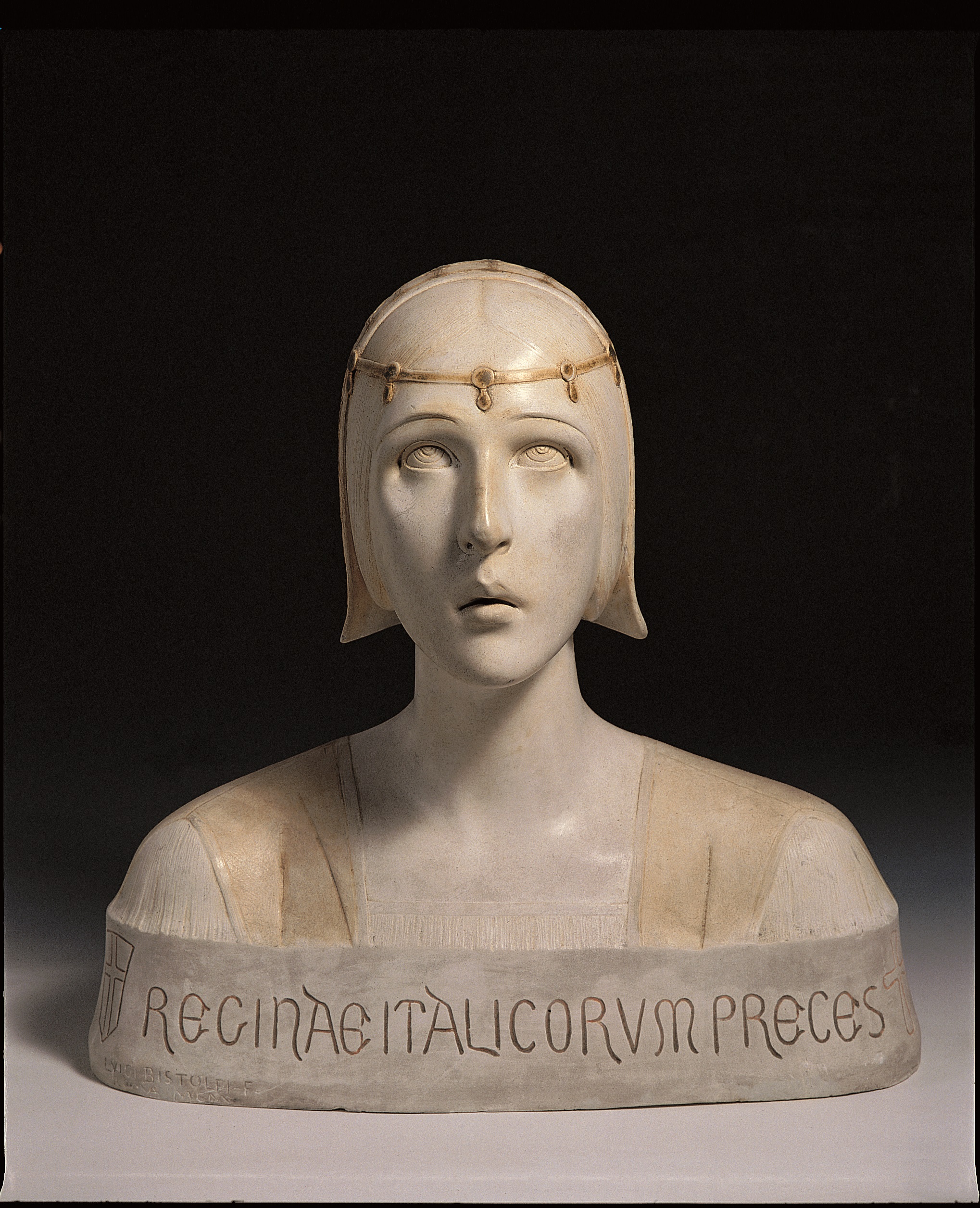
Click here to view image
Margherita di Savoia
Mitchell Wolfson Jr. 2007 Genova - donazione
Bistolfi, Luigi
87.1066.6.1
Unità di misura: cm; Altezza: 49; Larghezza: 49.5; Profondità: 20
gesso dipinto
In 1900 Margaret of Savoy passed the age of fifty; from 11 August 1900 she had to take on the role of Queen Mother, but for everyone she remained the first Queen of Italy since her husband Umberto became king in January 1878, succeeding his father Victor Emmanuel II.
Of conservative ideas, sympathising with Mussolini in the last years of her life, which ended in Bordighera on 4 January 1926, Margherita was one of the most popular characters of the House of Savoy from as far back as 1868 when, barely seventeen years old, she married the heir to the throne. Instinctively communicative, deeply convinced of the importance of her role, she contributed to the prestige of the Savoy dynasty and, in particular, to making it one of the identity and unifying symbols of the newly constituted nation. A painter for pleasure, a music lover, a friend of artists, writers and poets, including the republican Carducci, she was the animator of a famous cultural ‘club’ in the capital and an assiduous visitor to exhibitions. Margherita was always behind the purchases that her husband and son made at the most important exhibitions of the time, and the Venice Biennale, the first edition of which was held in 1895, had been instituted two years earlier by the lagoon municipality precisely to celebrate the royal couple's 25th wedding anniversary.




